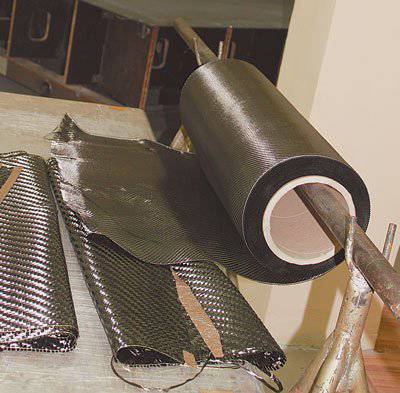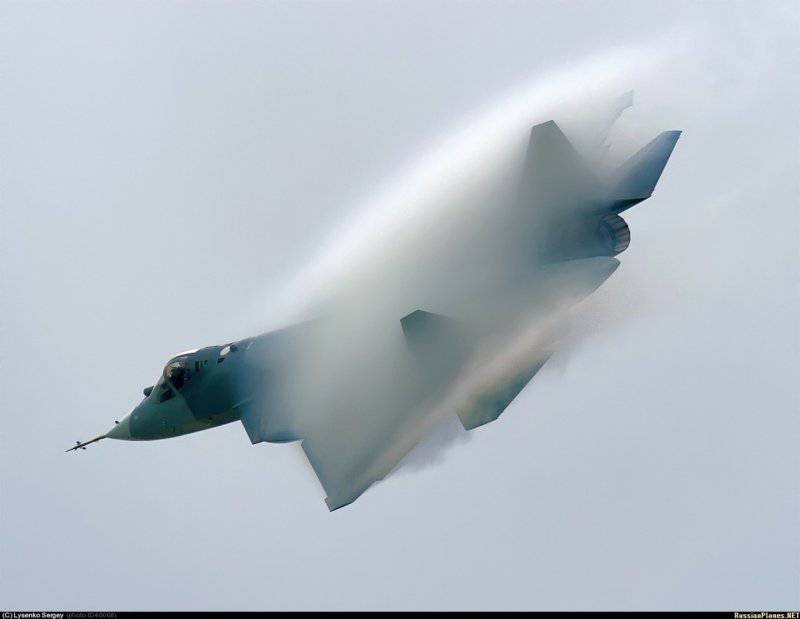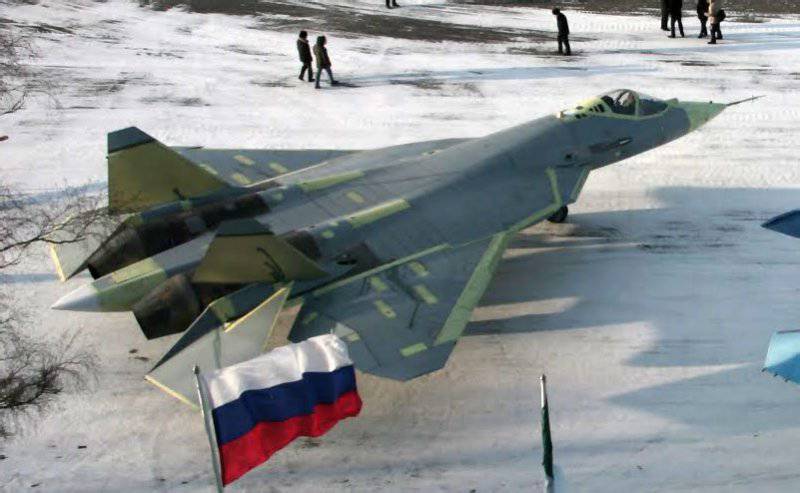From the outset, the project promising aviation complex tactical aviation (PAK FA) has been surrounded by rumors and controversies. The majority of them dealt with only two or three directions, such as the feasibility of the project, cost and characteristics of the finished aircraft. Since that time the design was completed, was built three prototypes, and spores are in the old way. But with all the modern aviation is not only an economic or tactical side, but also technological. And it is directly related to the two aforementioned. But for some strange reason technology incorporated in the PAK FA has not yet been awarded as a broad discussion that, for example, the cost of the project.

First of all it is worth noting a large number of aircraft components made of composite materials. They have long been the de facto standard for global aviation, but the T-50 fighter jet, designed for the PAK FA program, in this respect is the record holder among domestic military vehicles. The fact that composites make up a quarter of the dry weight of the aircraft. Given the strength and mass properties of composites and metals, one can imagine how many hundreds of pounds of weight was saved designers.
The savings in weight clearly "demonstrated" the outer surface of the T-50: 70% of its area is made of carbon fiber. At the same time, composites are not a panacea, they, like any other technology, too, have enough problems. For example, the composite skin aircraft from lightning can be dangerous for the whole structure. Carbon composites, having at its core carbon, conductive, but their resistance is much greater than that of metals. As a result, carbon fiber detail under the influence of lightning can be melted and even collapse.
To effectively "drip" of electricity to the body plane in the atmosphere is important to lower the resistance of the assembly. Especially in order to ensure the safe operation of aircraft T-50, as well as other types, with the outer parts of the composite materials, the All-Russia Institute of Aviation Materials (VIAM) was created by a new variety of carbon fiber. The essence of know-how lies in the fact that the new composite is composed of specially selected ingredients that increase the electrical and thermal conductivity of the details. This achieves reasonable protection against discharges of atmospheric electricity, as compared with traditional methods of combating zippers (metal mesh) is also achieved savings in weight - about 300-500 grams per square meter of surface. In addition, unlike metal meshes, special conductive carbon fiber does not increase the visibility of the aircraft radar.
Widespread use of composite materials, in addition to the gain in weight, had an impact on costs. Compared with almost all metal Su-27, T-50 is composed of four smaller number of parts, which ultimately affects the speed of manufacturing / assembly, and the price of the finished airframe. Against the backdrop of an expensive avionics peculiar to the fourth and fifth generation fighters, the gain in the price structure is unlikely to be superfluous.
The requirements for the fifth generation fighters have a point of relatively low visibility. If the reduction in visibility of aircraft in the infrared spectrum is a problem mainly engineers, motormen, the radar low profile - is the responsibility of materials science. In particular, so much of the outer surface of the T-50 airframe is made of composite materials that reflect radio waves worse than metal. However, the visibility of the aircraft is affected not only the material and shape of the external surfaces. Under certain conditions, unmask undistinguished in every respect a fighter can even inside of the cab.
The fact that "humanise" contours of the workplace can only be a pilot to a certain point, when this improvement will come into conflict with the ergonomics. Therefore, another solution is needed that is not associated with the relinking of ejection seat, instrument panel and controls. The most obvious way to avoid detection because of the cabin - to isolate it from external radio waves. With this responsibility, for example, to cope canopy. To do this on his glass or plastic should be applied a special screening coverage. Thereby coated engineers engaged in Obninsk CVTs "Technology". And we can not say that they did not succeed. Who is "Technology" tests are finished with the new light coating. It is expected that they will be installed on new copies of the T-50.
The technology is relatively simple: glass or plastic flashlight in a special installation of the magnetron is covered with several layers of special composition. Details of the secret recipe, but we know that in the coating composition contains gold, tin and indium. Cover lamp is made in five phases, during each of which is formed on the glass layer with a thickness less than 20 nanometers. Judging by the cover materials used in the lantern with such protection is an expensive pleasure. At the same time, representatives of CVTs 'Technology' claim that a light is needed no more than two or three grams of gold. So, only the material to cover one lamp cost 3-6 thousand rubles.

As the plane gets for the money? The main advantage of the new cover - a significant reduction in the transmission of radio waves. Argued that light with a spraying pass them 250 times worse than without it. Thus, the "interior" cockpit aircraft will not be able to give the enemy radar. Also, spraying the inside of the lamp protects the cockpit, especially plastic, from the infrared and ultraviolet radiation. There are cases when under the influence of sunlight the plastic parts that are in the cabin, much worse, they become fragile and brittle. Moreover, there is information that a "deterioration" belts led to the deaths of the pilots during ejection. As a result, the development of CVTs "Technology" works not only on the tactical characteristics of the aircraft, but also on its safety.

It is necessary to make a small reservation. The interior of the cabin are usually less efficient reflective surface than the engine compressor blades. You could even say that the invisibility of the cab is just a "nice addition" and more attention should be paid to hide the engine. To do this for a long time aircraft are equipped with air intake channel of curved form. Because of this air can normally flow into the engine, and radio waves because of their straight-line distribution - no. As a result, the visibility of the aircraft in front of the projection is significantly reduced.

There are also reports that the T-50 channels, air ducts, too, made of composite materials. In conjunction with the specific contours of the airframe of an integrated circuit that should give a tangible reduction in visibility without compromising the basic characteristics. Unfortunately, most of the information on the project PAK-FA is still a secret and we have to settle for the crumbs that have been made public. However, they are sufficient to improve the overall picture and keep it current. Small at first glance, the nuances of design, materials such as individual parts or features of the lamp cover, usually do not attract attention. But they can give a lot of food for thought and analysis.











.jpg)
.jpg)
.jpg)
%2Bfirst%2Btime%2BWZ-10%2Barmed%2Bhelicopters%2Bappear%2Bin%2Bconfrontation%2Bdrill%2B(5).png)
.jpg)



0 comments:
Post a Comment